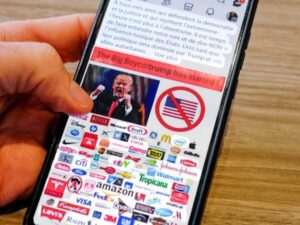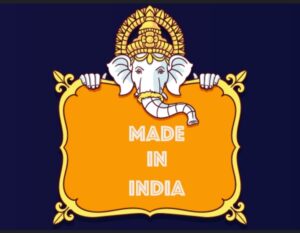Boycott America Across the World amid Trump’s Tariffs : Know What to Boycott in India
Boycott America Across the World amid Trump’s Tariffs : Tariffs, Trade Wars, and Boycotts , How the World Is Responding to Trump’s Economic Aggression ? After 50% American Tariffs on India, Indian must join Boycott America Campaign.
A Global Trade War in the Making
U.S. President Donald Trump’s tariff policies have turned trade negotiations into a high-stakes confrontation.
By imposing steep import duties — in some cases 50% or more — America is pressuring nations to accept American terms or risk losing market access.
For India, these tariffs have struck at a sensitive time. The U.S. is one of India’s largest export destinations, especially for textiles, pharmaceuticals, engineering goods, and IT services.
Prime Minister Narendra Modi has warned that the new duties could cost India billions in lost trade, hurt employment, and push some export-dependent companies to the brink.
India’s Economic Stakes after American Tariffs
The new U.S. tariffs are expected to hit multiple sectors:
1. Textiles & Garments – A slowdown in exports could affect thousands of small and medium enterprises.
2. Agricultural Products – Indian basmati rice, spices, and processed foods face higher barriers.
3. Engineering Goods – Automotive components and machinery exports risk declining orders.
4. IT Services – Though not directly tariffed, U.S. protectionism could spill over into stricter outsourcing rules.
Economists estimate that India could lose up to $100 billion annually if the situation continues — the equivalent of about ₹8,000 to ₹10,000 per citizen per year.

Global Boycotts: Citizens Taking Charge for Boycott America
India is not alone in facing Trump’s tariff tactics. In several countries, ordinary citizens are leading grassroots boycotts of U.S. goods and services.
1. Canada
- Supermarkets clearly label U.S. products, with Canadian alternatives side-by-side.
- Apps like Maple and Buy Canadian help shoppers scan barcodes to identify product origins.
- Sales of American goods have dropped 20–30% in some categories.
2. Denmark
- Social media groups distribute “Not American” stickers for stores. McDonald’s and Coca-Cola sales have slumped.
3. France
- The “Buy European” campaign lists local alternatives to U.S. goods.
- French supermarkets mark American products like Kraft and Heinz so customers can make informed choices.
4. Germany
- Consumers avoid American fuel brands and online retailers like Amazon, favouring domestic platforms.
5. South Korea
- Youth-led drives list U.S. brands to avoid, from fast food chains to Netflix. Sales at Starbucks and Burger King are falling.
6. Middle East
- Shoppers are avoiding U.S. luxury brands, hitting American retailers’ high-margin sectors.

Why This Boycott America Trend Matters for India
India’s massive population and consumer market give it unique leverage. If even a fraction of Indian households switched from U.S. products to domestic or third-country alternatives, the economic signal to Washington would be hard to ignore.
The upcoming festive season — Raksha Bandhan, Dussehra, and Diwali — offers a timely opportunity.
Gifts like imported chocolates, dry fruits, branded fast food, and luxury goods can be replaced with Indian products.
If each citizen redirected ₹10,000 of annual spending to Indian goods, the total economic boost could match or exceed the estimated loss from U.S. tariffs.
Major American Companies Operating in India which now be boycotted by Indians
Boycott advocates often highlight these U.S.-based corporations with significant Indian market presence:
A. Information Technology & Online Services
- Microsoft – Software, cloud services.
- Google – Search, ads, Android ecosystem, cloud.
- Amazon – E-commerce, AWS cloud services.
- IBM – IT consulting, outsourcing.
- Intel – Chip manufacturing and R&D.
- Cisco – Networking and telecom equipment.
- Cognizant – IT services.
- iPhone
B. Consumer Goods & Beverages
- PepsiCo – Soft drinks, snacks.
- Coca-Cola – Beverages.
- McDonald’s
- Pizza hut
- KFC
- Colgate-Palmolive – Oral and personal care.
- Johnson & Johnson – Healthcare products.
- Kellogg’s – Breakfast cereals.
- Kimberly-Clark – Personal hygiene products.
- Procter & Gamble( P&G ) – FMCG brands like Ariel, Tide, Gillette, Pampers.
C. Automotive & Manufacturing
- Ford – Automobiles.
- General Motors – Auto manufacturing.
- Cummins – Engines and power systems.
- Caterpillar – Construction and mining machinery.
- General Electric – Industrial equipment, power systems.
- Honeywell – Aerospace and industrial technologies.
- 3M – Industrial and consumer products.
D. Finance & Insurance
- Citigroup – Banking and investment.
- American Express – Financial services.
- JPMorgan – Banking.
- Morgan Stanley – Financial advisory and investment.
- MetLife India – Insurance.
E. Retail
- Walmart – Wholesale and e-commerce (Flipkart stake).
- Amazon – Wholesale and e-commerce
F. Pharmaceuticals
- Pfizer – Medicines and vaccines.
- Eli Lilly – Pharmaceuticals.
Boycott above American Companies as much as you can on your own level and try to always buy Swadeshi – Made in india or any other friendly countries.
Reducing purchases from these firms — especially in discretionary categories — would keep more money in the domestic economy.

Proven Tactics from Other Nations for Boycott America
If India were to adopt strategies used abroad, these could be effective:
- Product Origin Labels – Mandatory in-store marking of U.S.-made goods.
- Barcode Scanner Apps – Enabling quick origin checks.
- University & Corporate Policies – Limiting American imports in institutional purchases.
- Farmer Partnership Campaigns – Promoting Indian agricultural products during festivals.
- Social Media Lists – Publicising American brands and their alternatives.
- Beyond Goods – The Software Dependence Question
American companies also dominate India’s digital backbone. Calls are growing for “tech sovereignty” — using homegrown software and hosting critical platforms on Indian servers.
Proposals include for Boycott are :
- Expanding the government’s e-Office platform to the private sector.
- Supporting Indian alternatives to Microsoft Office, Google Workspace, and AWS.
- Investing in Indian cloud and cybersecurity solutions.
Economic Reality Check to India amid Boycott America Trend
While boycotts are a powerful symbolic tool, economists caution that many American companies employ thousands of Indians and source from local suppliers.
An indiscriminate boycott could harm domestic jobs tied to these global supply chains.
A balanced approach for Boycott America would focus on:
- Reducing dependence on non-essential American imports.
- Prioritising Indian and friendly-country suppliers.
- Encouraging American firms to localise more production within India.
- Turning Consumer Choice into Policy Influence
- Consumer spending can influence foreign policy by signalling public sentiment.
Coordinated campaigns — supported by labelling laws, retail cooperation, and social media outreach — could strengthen India’s negotiating position without formal sanctions.
The festival season provides both a symbolic and practical platform: buying Indian sends a cultural message while directly aiding domestic industries.
India’s Choice in a Shifting Global Order
Trump’s tariffs have set off a chain reaction worldwide: from Canadian supermarket shelves to Korean student unions, citizens are pushing back against U.S. trade pressure.
India, with its vast market, has the capacity to make one of the loudest statements — not through diplomatic speeches, but through everyday purchasing choices.
By strategically reducing dependence on U.S. products, embracing domestic alternatives, and leveraging consumer power, India could both protect its economy and assert its place in a changing global trade landscape.
Read Also: $15,000 visa bond policy to enter America
